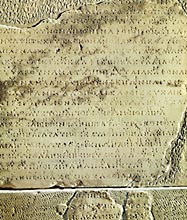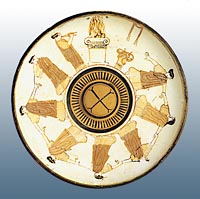In classical antiquity music was indissolubly linked with philosophy; and education in music was indispensable for the rounded education of the young. There was a multitude of studies - some of which have come down to us - on music, harmony and rhythm, and also on the study of musical instruments. Remains have also survived of the notation of ancient Greek music - "scores", in other words. Though frequently fragmentary and dating from late antiquity, they shed light on our knowledge of it. Studies on ancient Greek music, which included words and dancing, reveal its similarity with music of the East. Its theoretical groundwork (development of harmony) was originally arrived at by the Pythagoreans.
|
 |
 |
In classical Athens, music was one of the lessons making up elementary education. Belief in the effect of music on the human soul was reflected in the fact that it was bound up with all manifestations of public and private life - for example, weddings, deaths, the symposium, sacrifices, festivals, religious processions, theatrical performances, or exercise in the wrestling-ground. |
In Attic iconography (mainly on pots but also in reliefs and statues), there are many scenes of music. Portrayals of male and female musicians, or of music teaching in school, have much to tell us about the way instruments were played, and about their shape and evolution. The pipe [aulos], to take one example, was very popular in fifth-century Athens, having originally been associated principally with grave rituals. In the following century it was played by professional musicians, amongst them male pipers and girl-pipers. Fourth-century Attic pots show women playing the harp or the drum, mainly in religious rites.
One of the most important of the musicians who founded schools at Athens in the mid-fourth century B.C. was Aristoxenos from Taras. He was a pupil of the last of the Pythagoreans, and then of Aristotle. In his Harmonics, rebutting Pythagorean theory, he set forth the theoretical basis for a 'blended' scale and dealt with harmonization, diatonic and rhythmic, defining combinations of intervals and melisms.




